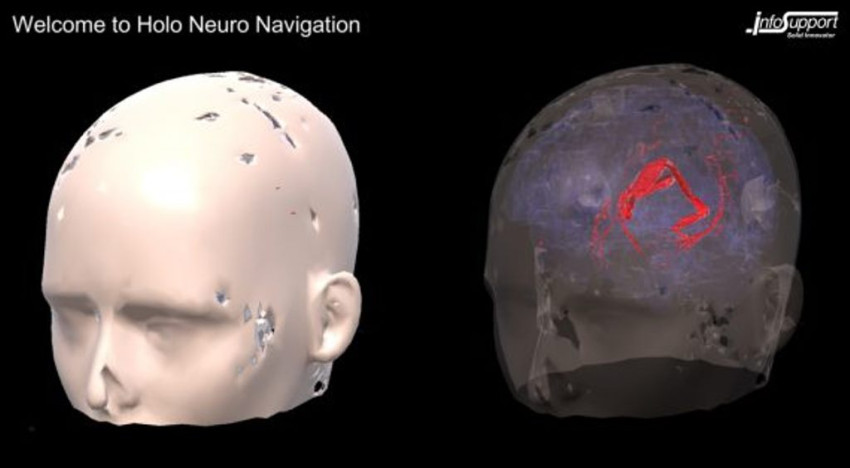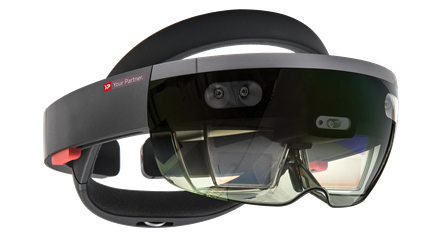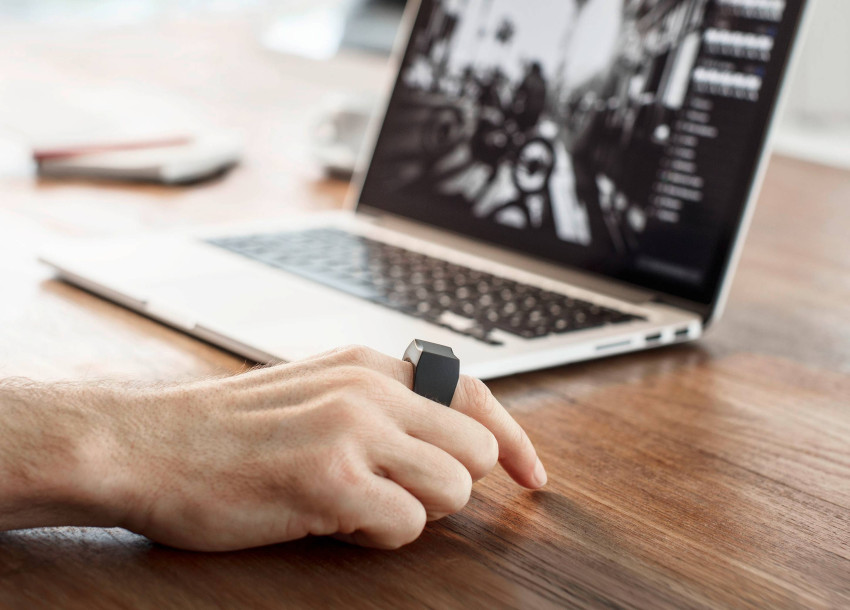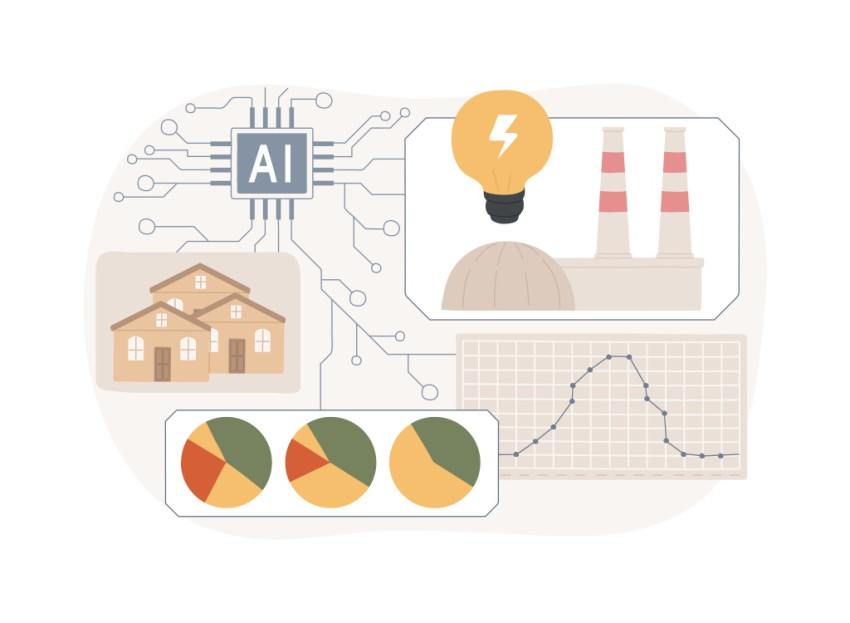
Brain surgery using a Hololens
Together with the UMC University Hospital of Utrecht (UMCU), the Dutch software company InfoSupport has developed an application for the HoloLens, which provides neurosurgeons with three-dimensional images of the brain they are to operate on. This helps them prepare for the operation and makes it easier to navigate to the correct location during surgery.
The app is the brainchild of software developer InfoSupport and the Brain Technology Institute that is affiliated to the UMCU. They recently completed a pilot project, in which they demonstrated the effective and stable operation of the app. The neurosurgeons involved in the project all concur that the app will be a very useful tool during their work.
 The Microsoft HoloLens (see photo to the right) is a pair of augmented reality smart glasses that allows users to see 3D projections superimposed on the actual situation. The projections really are 3D, so you can walk around them to view all sides of the projected object.
The Microsoft HoloLens (see photo to the right) is a pair of augmented reality smart glasses that allows users to see 3D projections superimposed on the actual situation. The projections really are 3D, so you can walk around them to view all sides of the projected object.
Three-dimensional
The main advantage of the app is that the person wearing the HoloLens, generally the neurosurgeon, will see three-dimensional images of the brain for the first time. Hospitals now still work with two-dimensional images of the brain – CT or MRI scans, or both – as the basis on which a brain surgeon prepares the operation. 'While this is an advanced system, it is still only two-dimensional. It's also extremely expensive,’ explains neurosurgeon Tristan van Doormaal of the UMCU, co-initiator of the app, in a press release (Dutch).
Based on the scans generated in the hospital, the new application creates a 3D hologram of the patient's brain, showing the blood vessels and any abnormal tissue, such as a tumour. Using a number of markers, the software projects these components on the patient with great precision. This ensures that the surgeon can prepare even more thoroughly for the operation, allowing them to execute certain tricky aspects of the operation more effectively.
Training
Besides being used during surgery, the app is also intended for training neurosurgeons and providing information to patients and their families. All those involved are increasingly interested in knowing the precise nature of an operation beforehand. Thanks to the hologram and the three-dimensional imaging, it becomes much simpler to show the patient and their family exactly where the problem lies in the brain, and what action must be taken during the operation, according to the press release.
Besides projecting live three-dimensional images in the HoloLens, the app developers have yet another achievement under their belt. They have successfully linked a number of HoloLenses together. One wearer operates the app, but the wearers of the other viewers can watch as well, and especially from various other angles. This functionality makes it particularly interesting for training purposes.
Extensive testing
The new app is not yet ready for use in the operating theatre. The next step is for surgeons to test the software extensively. Limitations to the HoloLens will undoubtedly be discovered along the way, and will need to be resolved in cooperation with Microsoft and others. 'The HoloLens currently still projects a hologram in front of any new object which comes into view, such as the surgeon's hands, for example. That won’t work and needs to be resolved,' says Max Verhorst of InfoSupport. Only then can the app creators request certification, i.e. approval for use in a hospital setting.
Simulation
At the same time, InfoSupport is working on new components of the app that will enable full simulation of an operation. Verhorst: 'At the moment, a number of doctors can already look at the same brain, but they have a very clear wish to be able to prepare for surgery. If a clamp is to be placed during surgery for example, the doctors wish to simulate this beforehand. It gives them immediate confirmation as to whether the clamp will fit and whether it should be inserted from the left or the right.'
Less expensive
InfoSupport hopes to make the new app widely available for use in hospitals. In modern, Western hospitals to start with, though the technology could also be particularly interesting in developing countries in due time. The existing systems for neuronavigation cost around half a million euros. 'Our application along with a couple of HoloLens viewers is considerably less expensive,' says Verhorst. A HoloLens currently costs approximately 3000 euros.
If you found this article interesting, subscribe for free to our weekly newsletter!
Opening image: InfoSupport






